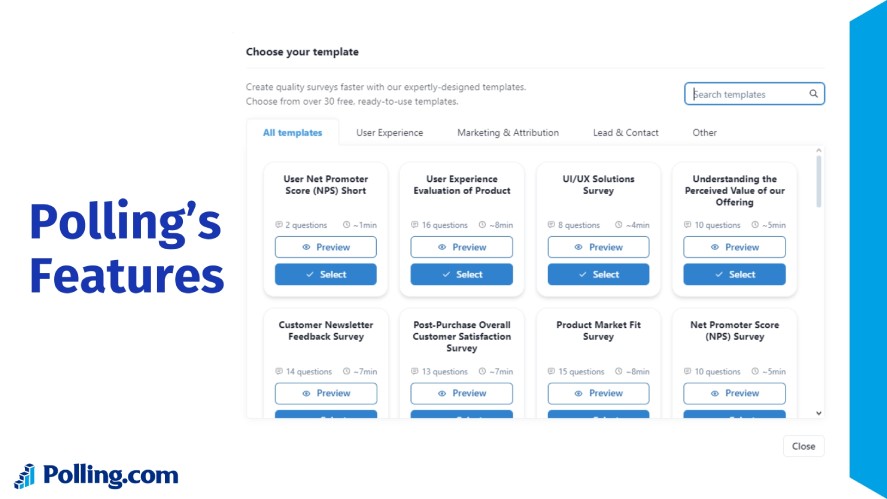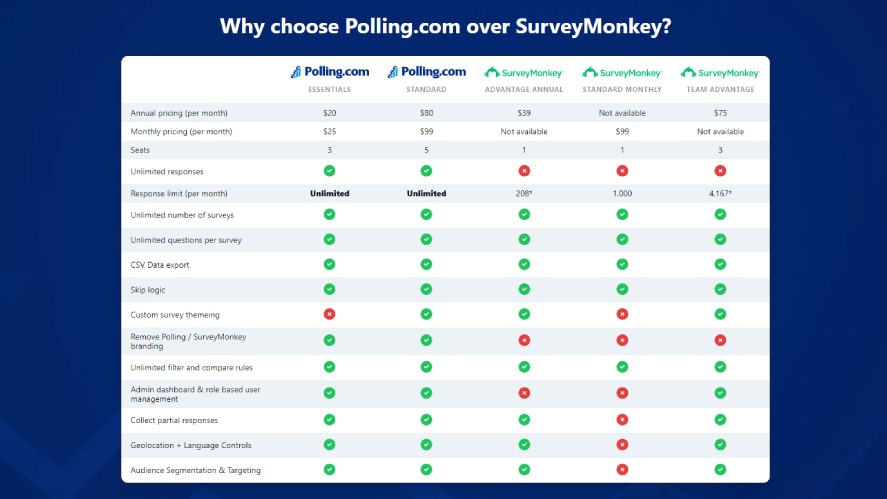
What Are the Number of Setups in Survey Results?
Survey setups are crucial for gathering meaningful and actionable results.
How a survey is designed (its structure, grouping, and delivery) directly influences the quality of the collected results.
Effective setups ensure that the survey’s responses are relevant and aligned with the company’s objectives, making them crucial for critical decisions.
This article will help you understand the concept of the number of setups in survey results and explain why it matters.
What Does “Number of Setups” Mean in Survey Results?
The number of setups in survey results refers to configurations or structures during the design and execution of a survey.
These setups have multiple factors like demographic groupings, question formats, and delivery methods, all forming the overall survey structure.

For example, setups could include segmenting responses based on age groups or geographic regions.
They also could include varying question types, such as multiple-choice versus open-ended, to capture a diverse range of data points, making the survey more useful and focused.
Monitoring the number of setups is essential because it ensures the survey targets the intended audience with personalized questions and structure.
It also helps identify patterns or trends within specific groupings, making it easier to extract actionable insights.
Lastly, a well-monitored number of setups can reveal gaps or redundancies in the survey, making it easier to adjust and optimize data quality.
Why Is Tracking the Number of Setups Important?
Tracking the number of setups is essential because it directly influences data accuracy and survey insights.
Each setup represents a unique configuration or condition under which the data is collected.
So, researchers can identify inconsistencies, minimize errors, and ensure the results are valid by tracking the setups.
The number of setups also impacts how complex a survey becomes.
With more setups, you’re juggling additional variables and potential interactions, making the survey data analysis more challenging.
If these complexities aren’t accounted for, it’s easy to end up with insights that don’t tell the whole story, leading you in the wrong direction.
On the flip side, having clear and well-defined setups offers significant advantages.
They simplify the data collection, make the findings easier to interpret and help uncover actionable insights.
Common Types of Setups in Survey Results
Survey setups are the building blocks of an effective data collection process. They define how the survey is structured and tailored to meet specific goals.

Here are some common types of setups, along with survey examples to illustrate their importance:
Predefined vs. Custom Setups
- Predefined Setups: These are standard configurations applied across many surveys. For example, a generic satisfaction survey might use a standard set of questions with limited adjustments for different audiences.
- Custom Setups: These are tailored to specific needs, allowing for a more personalized approach. For instance, a survey targeting employees in different departments might include unique questions based on their roles.
Examples of Setups by Key Factors
- Demographic Variables
- Age: Segmenting responses by age groups (e.g., 18–24, 25–34) can reveal generational differences in preferences or opinions.
- Gender: Understanding how feedback varies by gender helps identify trends relevant to specific groups.
- Location: Regional setups allow companies to analyze data based on geographic differences, such as urban vs. rural markets.
- Survey Goals
- Product Feedback: Questions focus on usability, features, and customer satisfaction to refine a product.
- Employee Satisfaction: Setups might include segments like team size or job roles to uncover department-specific insights.
- Distribution Channels
- Online Surveys: Ideal for reaching a broad audience quickly, online setups often include email or social media links.
- Mobile Surveys: These setups are optimized for smartphone users, focusing on concise, easy-to-navigate survey questions.
- In-Person Surveys: Often used for detailed interviews or event-specific feedback, these setups provide opportunities for follow-up questions.
By carefully choosing and monitoring these setups, organizations can ensure their surveys are both efficient and insightful, leading to better-informed decisions.
How to Optimize the Number of Setups in Surveys
Optimizing survey setups is key to collecting valuable data while maintaining simplicity and efficiency.
To optimize the number of steps in surveys, you should start small first by limiting the number of setups in early iterations. Begin with essential categories and expand as needed.
Each setup should align with the survey’s objectives.
For example, if you’re gathering feedback on a product launch, focus on setups like usage frequency or satisfaction levels.
Next, run a pilot survey to identify unnecessary setups or redundancies. This step ensures the final survey is streamlined and user-friendly.
Last but not least, use tools that automate setup creation based on your target audience or survey type. This saves time and reduces the risk of manual errors.

Tools like Polling.com offer powerful features to simplify the setup process. It has a simple survey builder to create personalized questions and allows for the adjustment of templates to fit specific goals.
These tools also have survey segmentation tools and real-time analysis, making identifying trends and gaps in your data easier.
Tools to Manage and Analyze Setups Effectively
There are many polling and survey tools that can manage and analyze setups effectively. Among them, Polling.com stands out as the top choice for flexible setups.
The tool has a lot of features like survey templates, easy customization, real-time insights, and scalability, making it ideal for creating survey setups.
With the Polling.com tool, you can conduct enterprise-grade research surveys in just a few clicks, engage your audience at the right time, and gain real-time results that provide actionable insights.
When comparing Polling.com with other survey platforms, it’s essential to focus on the features that can impact the survey setup’s effectiveness.
For example, both Polling.com’s plans offer audience segmentation and targeting, features that are missing from SurveyMonkey’s standard plan.

For a full list of feature comparisons between Polling.com and its alternatives, check the list below:
Challenges with Tracking the Number of Setups in Survey Results
While tracking the number of setups is critical for gathering accurate insights, it comes with challenges.
One common pitfall is overcomplicating setups.
This case happens when you’re trying to cover too many variables or creating overly intricate groupings, leading to data overload and making it harder to extract meaningful insights.
Overcomplicating setups can also result in longer survey completion times, which might discourage respondents from participating.
Another challenge lies in configuration errors.
Misaligned demographic groupings, poorly worded questions, or inconsistent delivery methods can skew the data, leading to inaccurate conclusions.
Similarly, interpreting the results without understanding the nuances of each setup can lead to misinformed decisions.
To avoid these issues, prioritize simplicity and relevance when designing setups.
Use tools that streamline configuration, test the survey thoroughly before launch, and maintain a clear focus on the survey’s objectives.
Regularly reviewing the setups during the data collection can also help catch and correct errors early, ensuring reliable and actionable insights.
Conclusion
In summary, the number and quality of setups play a vital role in ensuring surveys yield meaningful, actionable results.
A well-defined setup helps streamline data collection, enhance insights, and drive informed decision-making by aligning survey design with objectives.
Polling.com stands out as a powerful tool to simplify and optimize survey setups.
Its user-friendly features take the complexity out of survey design and ensure your efforts are focused on what matters most—gathering reliable data.
Ready to elevate your surveys? Try Polling.com today and experience how easy it is to create impactful surveys that deliver results.
